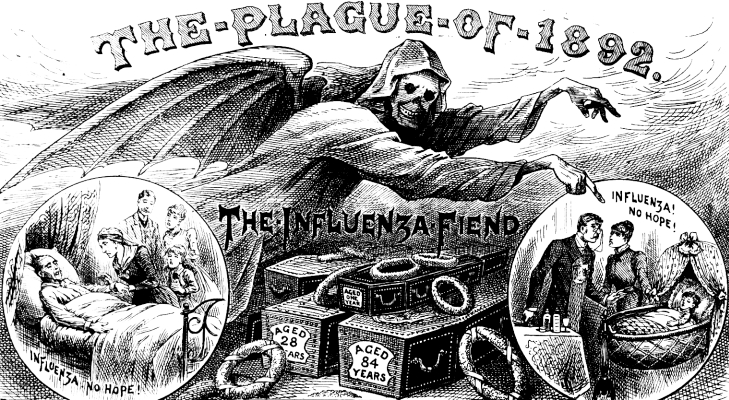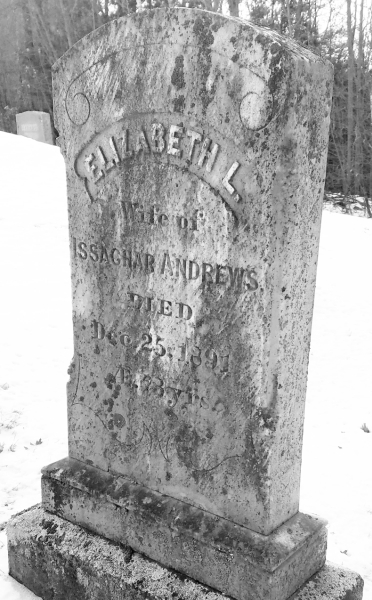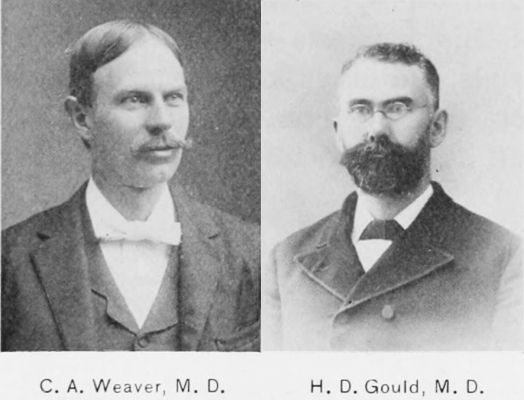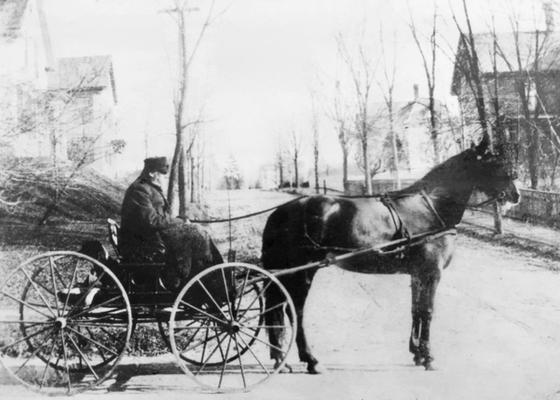New Boston Historical Society
New Boston, New Hampshire

The Influenza Fiend from The Illustrated Police News.
New Boston and the Russian Flu
by Mary Atai
In the New Boston Argus newspapers from the 1890s, we learn of an early epidemic of the flu that affected New Boston greatly. This flu first took hold in St. Petersburg, Russia, at the end of 1889, and moved west through Europe to America, reaching New England only 70 days after it began. This became known as the Russian flu, or the 1889-1890 flu pandemic, with recurrences until 1895. Over the next few years about one million people worldwide succumbed to it.
 On January 9, 1892, a statement in The Argus revealed, "nearly twenty persons are suffering with [la grippe] in town."
(The population of New Boston was about 1,000 people at this time.)
Names of the ill and the dead were listed weekly.
On January 9, 1892, a statement in The Argus revealed, "nearly twenty persons are suffering with [la grippe] in town."
(The population of New Boston was about 1,000 people at this time.)
Names of the ill and the dead were listed weekly.One well-known name listed in the obituaries was that of Elizabeth Lull Andrews, wife of Issachar Andrews, his father having been Deacon Issachar Andrews, who was well documented by Reverend Cogswell in his book History of New Boston.
As the story goes, in 1891 both Mr. and Mrs. Andrews were very ill with severe bronchial symptoms. Mr. Andrews rallied, but Betsy succumbed. Both had been born in New Boston and had lived here all their lives. They were planning to celebrate their 50th wedding anniversary that week when she died on Christmas day. The newspaper's beautiful tribute included these lines:
The three score years and ten had passed
In honest industry and toil until the last,
In patient watching on the unseen shore,
Thy wife will wait for thee 'till life is o'er.
The names of other well-known early New Boston families affected by this flu included Atwood, Kelso, Chandler, and Hooper.
Gravestone inscription:
ELIZABETH L. Wife of ISSACHAR ANDREWS
DIED Dec. 25, 1891 Age 73 yrs.
In the 1893 text The Cottage Physician, the categories of flu were divided into three types, the first being the "neurotic type," in which it was believed that there might be disturbances of hearing and smelling, "leading to delirium and unpleasant complications of meningitis and insanity." However, the other two types are described as essentially causing inflammation of the mucous membranes, the throat, and the bronchi, with the possibility of pneumonia intervening; and also, there being symptoms of high fever and chills, as well as a rapid lowering of the vitality of the body, which coincides with our beliefs more than 125 years later.
Because the causative organism had not been discovered yet, diagnosis was made based on presenting symptoms. An exciting component of this story is the discovery of viruses in 1892. There had been a finding made around this time that the flu was caused by "the smallest disease germs that have so far been recognized", and the medical world was awaiting the truth of this claim. Of course, this was verified, and Dmitri Ivanovsky's discovery of the existence of viruses was validated.

Doctors Weaver and Gould, from The Granite Monthly, 1897
Also treating flu patients at that time was Dr. Herbert Gould. A native of Weare, NH, Dr. Gould came to New Boston in 1883 from a practice in Connecticut. He lived in the "Bliss House" in Central Square, later torn down and replaced by the blacksmith shop which became Heidi Palmer's Real Estate Agency and is now offices for an accountant and a veterinarian.

A later photograph of Doctor Gould making his rounds

Medications used to fight flu symptoms included quinine and camphor.

Letterhead of New Boston's undertaker, Edmund P. Fox
About the author:
Mary Atai is the Vice President of the Historical Society. Mary worked as a Registered Nurse for 38 years, mostly in Pediatrics.
